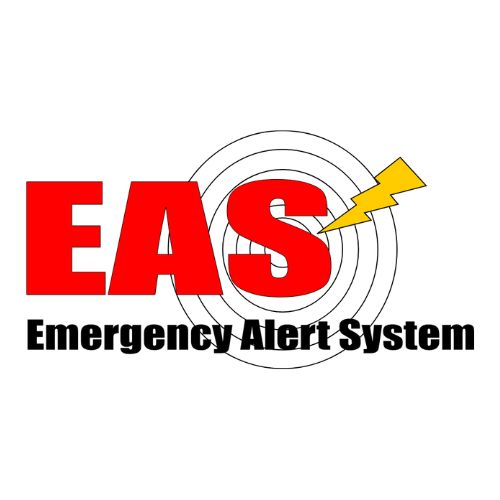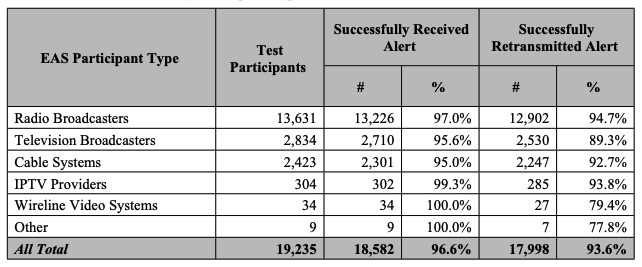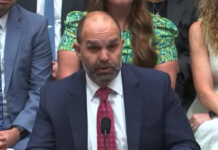
In October, the FCC conducted a nationwide test of the Emergency Alert System. Now, the Commission’s report on the test has great news for radio – especially as broadcasters cite the EAS as the key reason to require auto manufacturers to carry AM radio in cars for public safety.
The Commission report found that the vast majority of EAS participants, including radio, TV, cable, and satellite services, successfully received and retransmitted the alert. 96.6% of EAS participants received the test message, an improvement from 89.3% in 2021. The retransmission success rate also rose to 93.6% from 87.1%.
Of all the participants, AM/FM radio proved the most reliable.
13,631 radio broadcasters participated in the test, compared to 2,834 TV stations and 2,423 cable systems. Of those three, radio boasted a 97% success rate in receiving the alert. Television scored 95.6% reception rate, while 95% of cable systems received the EAS message.
Radio also outperformed when it came to retransmitting the alert, with a 94.7% participant success rate. Cable managed to outperform TV, at 92.7% and 89.3% success rates, respectively. Given the considerably higher number of radio stations involved, this data shows a clear advantage for radio in the event of a catastrophic national emergency.

While detractors of the AM For Every Vehicle Act claim that the concurrent Wireless Emergency Alert test on cell phones showed there’s no need to require radio to distribute EAS warnings, events from hurricanes to the Maui wildfires have proven that cell reception commonly fails and people turn to radio in their cars to get emergency information.
The FCC found the poorest-performing regions for the test were primarily US territories that have difficulties with cell reception, including the Northern Mariana Islands, Guam, American Samoa, the US Virgin Islands, and Puerto Rico, with retransmission successes ranging from 20.0% to 89.7%.
In response, the FCC’s Public Safety and Homeland Security Bureau recommends that the Commission implement rules to enhance operational readiness and ensure timely software updates and equipment replacements. It also suggests legislative action to mandate all Commercial Mobile Service Providers support WEA to improve the system’s reliability and coverage, especially in US territories.









The radio needs to be ON for the EAS alert to be heard by the driver and passengers. The system would be improved if a second car radio tuner was always on and scanning to recognize an alert (not a test) and generate some sort of visual and audio alert to make the car occupants aware that a situation is occurring and the message can be heard by doing something. A store and forward system that would time out after 5 minutes.
Yeah, but so was NORAD and the Airforce. The surprise, clandestine attack caught everyone off guard. So, of course EAS was late to the party. And, in this special case, many of NYC’s OTA signals were beheaded by the collapse of the north tower.
Only 3 radio stations on WTC. The rest are on ESB.
The EAS depends on Emergency Managers to initiate an alert. EAS is a tool for the people with authority to declare emergencies, including weather alerts.
Sometimes they make the wrong choices. We had a mass evacuation and the Emergency Managers used reverse 911. Which immediately crashed and took an hour to reboot. It was a mass evacuation and they never used EAS to reach the 100k people impacted.
It wasn’t a failure of the system nor AM. It was poor judgement in the decision not to use it.
yes but…..im in manhattan. the EAS was silent on 9/11
disaster is not a good argument for AM.